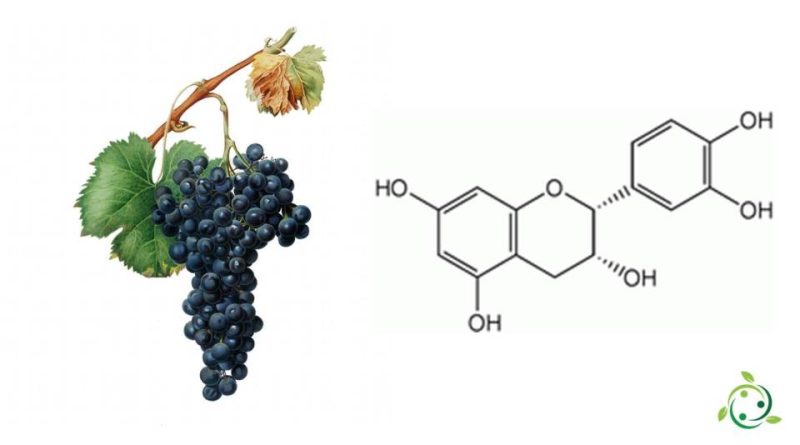Proanthocyanidins
Proanthocyanidins
Proanthocyanidins are a class of naturally occurring polyphenols found in many plants.
From the point of view of the chemical structure they are oligomeric repetitions of the flavonoids; in fact many are oligomeric repetitions of catechin and epicatechin and their esters of gallic acid.
Proanthocyanidins were discovered in 1947 by Jacques Masquelier, who developed and patented the techniques for extracting oligomeric proanthocyanidins from pine bark and grape seeds.
Proanthocyanidins, including the less bioactive and bioavailable polymers (four or more catechins), represent a group of condensed flavan-3-oils, such as procyanidins, prodelfinidins and propelargonidins.
They are found in many plants; we find them in particular in apples, in the bark of maritime pine and in that of most other species of pine, in cinnamon, aronia fruit, cocoa beans, grape seeds, grape skin (procyanidins and prodelfinidins) and, in general, in the species Vitis vinifera.
However, blueberry, cranberry, black currant, green tea, black tea, and other plants also contain these flavonoids. Furthermore, cocoa beans contain the highest concentrations. Proanthocyanidins can also be isolated from the heartwood of Quercus petraea and Q. robur (oak from wine barrels). Açaí oil, obtained from the fruit of the açaí palm (Euterpe oleracea), is rich in numerous procyanidin oligomers.
Apples contain on average about eight times the amount of proanthocyanidins found in wine per serving, with some of the highest amounts found in Red Delicious and Granny Smith varieties.
Property –
Proanthocyanidins, at the level of human metabolism, perform some important functions:
– those of counteracting the action of free radicals. They act thanks to their ability to recycle vitamin C, to save vitamin E from oxidation and to extinguish a wider range of free radicals than most other antioxidants. By eliminating free radicals, proanthocyanidins reduce their related effects.
– protect the heart, reducing the risk of disease. They reduce blood fats, act as an emollient on blood vessels, reduce blood pressure, prevent thrombus formation.
– they strengthen and repair the connective tissue: they counteract the decomposition of collagen and repair the damage caused by free radicals.
– act as a natural sunscreen: the sun’s rays destroy up to 50% of skin cells; proanthocyanidins reduce this value to about 15%.
– improve circulation by strengthening the walls of blood vessels. Their use is therefore useful for those with a compromised circulatory system, such as heart attacks, diabetics, arthritics, smokers, users of oral contraceptives and people with cardiovascular insufficiency.
– improve cognitive function. By managing to cross the blood brain barrier, proanthocyanidins are able to fight free radicals directly within the vessels of the brain. The result is an improvement in mental acuity and less exposure to apoplexy.
– moderate allergic and inflammatory reactions. Proanthocyanidins inhibit the production of histamine, in fact they are used in the treatment of allergies.
Contraindications –
The intake of proanthocyanidins does not result in particular contraindications, as they are substances practically free of toxicity; however, it is advisable to avoid taking it if you are pregnant and breastfeeding. The proanthocyanidins contained in the grape seed extract have been attributed anticoagulant properties, therefore it is not recommended to associate them with antiplatelet drugs.
Warning: The information shown is not medical advice and may not be accurate. The contents are for illustrative purposes only and do not replace medical advice.

